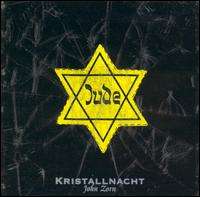EST
Est is French, Romanian and Italian for east. Est, EST and Est. may refer to:
Geography
Other uses
As an acronym
The acronym EST may refer to:
Organizations
Science and medicine

Est! Est!! Est!!! di Montefiascone
Est! Est!! Est!!! di Montefiascone (also known as just Est! Est!! Est!!!) is an Italian wine region centered on the commune of Montefiascone in province of Viterbo in Latium. Since 1966, the white Trebbiano- and Malvasia bianca-based wines produced within the 1,000 acres (400 ha) of the region can qualify for Denominazione di origine controllata (DOC) designation under Italian wine laws.
The unusual name of the wine region dates back to a 12th-century tale of a German Bishop traveling to the Vatican for a meeting with the Pope. The Bishop sent a prelate ahead of him to survey the villages along the route for the best wines. The 'wine scout' had instructions to write 'Est' (Latin for 'It is') on the door or on the wall of the inns he visited when he was particularly impressed with the quality of the wine they served so the Bishop following on his trail would have known in advance where to make a stop. At a Montefiascone inn, the prelate was reportedly so overwhelmed with the local wine that he wrote Est! Est!! Est!!! on the door. While this tale has been widely repeated, with some variations (such as the event taking place in the 10th century and/or involving a Flemish bishop, attending the coronation of Henry V, Holy Roman Emperor instead of meeting the Pope, etc.), the story is considered by many wine experts, such as Master of Wine Mary Ewing-Mulligan, to be apocryphal.

Est, Netherlands
Est is a town in the Dutch province of Gelderland. It is a part of the municipality of Neerijnen, and lies about 8 km west of Tiel.
In 2001, the town of Est had 600+ inhabitants. The built-up area of the town was 0.065 km², and contained 108 residences. The statistical area "Est", which also can include the peripheral parts of the village, as well as the surrounding countryside, has a population of around 610.
References

Kristallnacht
Kristallnacht (German pronunciation: [kʁɪsˈtalnaχt]; English: "Crystal Night") or Reichskristallnacht [ˌʁaɪçs.kʁɪsˈtalnaχt], also referred to as the Night of Broken Glass, Reichspogromnacht [ˌʁaɪçs.poˈɡʁoːmnaχt] or simply Pogromnacht [poˈɡʁoːmnaχt], and Novemberpogrome [noˈvɛmbɐpoɡʁoːmə], was a pogrom against Jews throughout Nazi Germany and Austria on 9–10 November 1938, carried out by SA paramilitary forces and German civilians. German authorities looked on without intervening. The name Kristallnacht comes from the shards of broken glass that littered the streets after Jewish-owned stores, buildings, and synagogues had their windows smashed.
Estimates of the number of fatalities caused by the pogrom have varied. Early reporting estimated that 91 Jewish people were murdered during the attacks. Modern analysis of German scholarly sources by historians such as Richard J. Evans puts the number much higher. When deaths from post-arrest maltreatment and subsequent suicides are included, the death toll climbs into the hundreds.

Kristallnacht (album)
Kristallnacht is an album by John Zorn first released in 1993 on the Japanese Eva label and subsequently in 1995 on Zorn's own Tzadik Records label.
Background
Zorn's compositions for the album were based around the events before, during, and following the infamous Night of Broken Glass and represented his first musical exploration of his Jewish cultural heritage.
Zorn has stated:
It’s tied together with passion and research. Every Jew has to come to grips with the holocaust in some kind of way and that was my statement, that’s how I did it. I do not need to do it again (…) it meant a lot to me. It was like a whole lifetime of denying my Jewish heritage coming out in one piece -- John Zorn on BBC Jazz File (July 2000)
Reception
The Allmusic review by Joslyn Layne awarded the album 4½ stars stating "John Zorn has created a musical work that powerfully represents the different stages of this historical event... Zorn's forceful undertaking is realized through the expert and passionate musicianship". Guy Peters stated "Kristallnacht is an attempt at a musical recreation of one of the darkest chapters of the Nazi reign, with music ranging from fairly conventional roots music to extreme near-industrial chaos... Zorn has never aimed at major popularity, preferring total independence above all, and this is what makes an album like Kristallnacht possible... Luckily there are several tracks in which he finds a much more impressive and bearable balance between disturbing noise and affecting beauty, a combination that’s characteristic of several of his releases. Or maybe it’s about disturbing beauty and affecting noise, I’m not entirely sure".
Podcasts:

